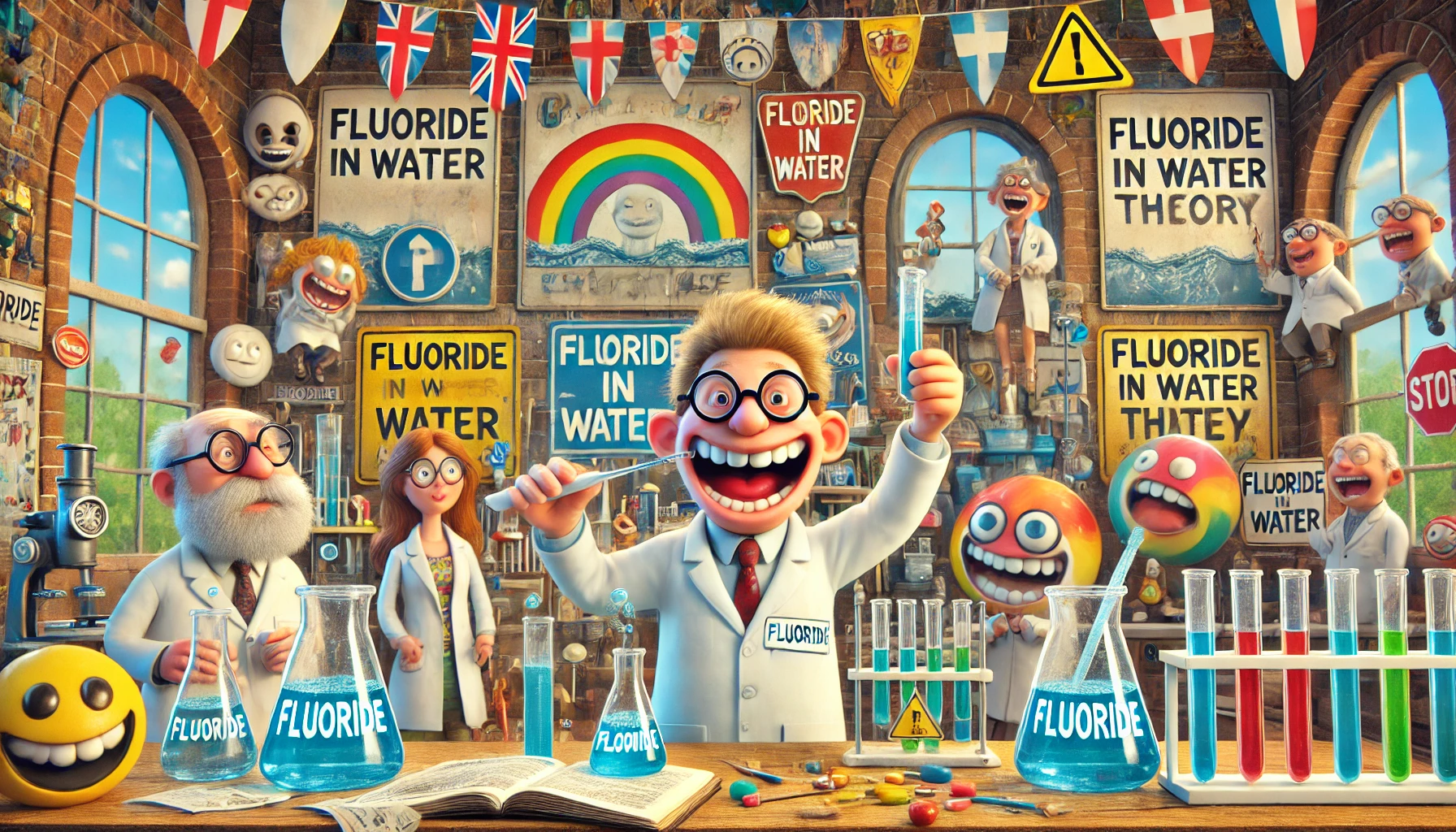
Fluoride in Water: A Comprehensive Examination of the Conspiracy Theory
Introduction
The addition of fluoride to drinking water, a practice known as water fluoridation, has been a public health measure in many countries since the mid-20th century. It aims to reduce tooth decay and improve dental health. However, the practice has also sparked a persistent conspiracy theory that fluoride in water is harmful, alleging various health risks and suggesting ulterior motives behind its use. This article explores the origins, evidence, and counterarguments of the fluoride in water theory, examining its cultural impact and the reasons why this idea endures. Additionally, we will discuss Nano Hydroxyapatite, an alternative to fluoride for dental health.
Background and History
Water fluoridation began in the United States in the 1940s, following studies that showed a link between naturally occurring fluoride in water and lower rates of tooth decay. The practice was soon adopted in many countries as a cost-effective public health measure. Today, fluoride is added to the water supplies of over 25 countries, benefiting hundreds of millions of people.
Despite the proven benefits of fluoride in reducing cavities and promoting dental health, the practice has faced opposition. Critics argue that fluoride is a toxic industrial byproduct, that it poses health risks, and that its addition to water supplies is a form of mass medication without individual consent.
Main Arguments and Evidence
Proponents of the belief that fluoride in drinking water is harmful present several key arguments, supported by various types of evidence:
Toxicity Concerns: Critics argue that fluoride is a toxic substance and should not be ingested. They cite studies linking high levels of fluoride to adverse health effects, including skeletal fluorosis, thyroid problems, and neurological issues.
Mass Medication: Opponents claim that water fluoridation is a form of mass medication, imposing a drug on the entire population without individual consent or dosage control.
Questionable Efficacy: Some argue that the benefits of water fluoridation are overstated or negligible, suggesting that improved dental health in many countries is due to other factors, such as better dental hygiene and access to dental care.
Ethical and Legal Issues: The practice is criticized on ethical grounds, with arguments that individuals should have the right to choose what substances they ingest. Legal challenges have also been made against mandatory water fluoridation.
Alternative Solutions: Advocates for discontinuing water fluoridation often promote alternative dental health measures, such as the use of Nano Hydroxyapatite, a substance that has shown similar effectiveness to fluoride in preventing cavities and strengthening teeth.
Impact and Cultural Significance
The fluoride in water theory has had a significant impact on public discourse and policy in some regions. It reflects broader societal concerns about health, safety, and government intervention. The theory taps into deep-seated fears about the potential harm of chemicals and the right to bodily autonomy.
The debate over fluoride also intersects with issues of public trust in scientific and governmental institutions. The persistence of this theory highlights the challenges of communicating scientific consensus and addressing public concerns in a transparent and effective manner.
Counterarguments and Debunking
The belief that fluoride in drinking water is harmful has been extensively scrutinized by scientists, public health officials, and dental professionals. Here are the key counterarguments:
Scientific Consensus: The overwhelming majority of scientific studies and public health organizations, including the World Health Organization (WHO), the Centers for Disease Control and Prevention (CDC), and the American Dental Association (ADA), support the safety and efficacy of water fluoridation. Extensive research shows that the levels of fluoride used in water fluoridation are safe and effective in reducing tooth decay.
Dosage Control: Fluoride levels in water are carefully monitored and controlled to ensure they are within safe limits. The concentration of fluoride in drinking water is set well below levels that could cause harm.
Health Benefits: Water fluoridation has been shown to significantly reduce the prevalence of dental caries (cavities), especially in communities with limited access to dental care. The practice has been credited with improving dental health and reducing dental treatment costs.
Toxicity Clarification: While fluoride can be toxic at high levels, the concentrations used in water fluoridation are much lower and have been proven safe. Fluoride is similar to many other substances, such as vitamins and minerals, which can be beneficial in small amounts but harmful in excessive quantities.
Ethical Considerations: Public health measures often involve balancing individual autonomy with community health benefits. Water fluoridation, like vaccination and sanitation, is considered a reasonable public health intervention given its significant benefits and low risk.
Nano Hydroxyapatite as an Alternative
Nano Hydroxyapatite (nHAp) is emerging as an effective alternative to fluoride for dental health. It is a naturally occurring mineral that makes up the majority of tooth enamel and bone. Research has shown that nHAp can remineralize tooth enamel, reduce sensitivity, and protect against cavities, much like fluoride.
Remineralization: nHAp works by filling in tiny cracks and fissures in tooth enamel, promoting remineralization and strengthening teeth.
Biocompatibility: As a natural component of teeth, nHAp is biocompatible and non-toxic, making it a safe alternative for those concerned about fluoride.
Widespread Use: nHAp is already used in various dental products, including toothpaste, mouthwashes, and dental treatments, offering consumers a fluoride-free option for maintaining oral health.
Conclusion
The theory that fluoride in drinking water is harmful remains a contentious issue, despite overwhelming scientific evidence supporting its safety and efficacy. While the concerns about toxicity, mass medication, and individual rights are understandable, they are largely addressed by the extensive research and regulatory measures in place. Alternative solutions like Nano Hydroxyapatite provide additional options for those seeking fluoride-free dental care.
Rebuttal or Additional Insights
Despite extensive debunking efforts, the belief that fluoride in drinking water is harmful persists, suggesting that there may be elements of social and psychological factors worth exploring. For instance, the appeal of this theory can be linked to broader human desires for control, safety, and skepticism of government and scientific institutions. This phenomenon underscores the importance of critical thinking and scientific literacy in navigating complex health narratives.
Furthermore, the psychological and sociological aspects of the fluoride in water phenomenon are worth considering. The human mind is adept at pattern recognition, and in the absence of clear evidence, people may fill in the gaps with existing myths and stories. The cultural significance of the fluoride in water theory, as a symbol of questioning established authority and exploring the limits of public health measures, plays a role in perpetuating the legend.
Moreover, the persistence of belief in harmful fluoride highlights the need for effective communication and education. Addressing the underlying fears and misconceptions that lead people to embrace such theories is crucial for fostering a well-informed public. Engaging with believers in respectful and open dialogue can help bridge gaps in understanding and promote a more nuanced appreciation of scientific and public health evidence.
The Real Exploration
Beyond the debate over fluoride lies a deeper and more profound journey: the exploration of consciousness. Engaging in practices such as meditation, mindfulness, and sadhana can lead to transformative insights and profound self-understanding. The Shankara Oracle, a powerful tool for spiritual insight, can help individuals navigate this inner journey, offering clarity and perspective that surpasses the allure of conspiracy theories.
This path encourages seekers to look within, to question their own beliefs, perceptions, and the nature of reality. By exploring the depths of one’s consciousness, one can find answers to the most fundamental questions about existence, purpose, and the universe. The real adventure, then, is not just in questioning the safety of fluoride but in uncovering the vast, uncharted territories within ourselves.
Furthermore, it is important to acknowledge that we are all living in a temporary fiction, a transient reality that we will leave behind when we die. None of what we believe we are is eternal, and the illusions we become attached to will fade away. This understanding invites us to look beyond our fears and fantasies, recognizing that the ultimate truth lies beyond the ephemeral concerns of the material world.
In conclusion, while the evidence overwhelmingly supports the safety and efficacy of water fluoridation, the fluoride in water theory highlights important discussions about skepticism, critical thinking, and the exploration of human consciousness. It is crucial to approach the fluoride phenomenon with both skepticism and an open mind, considering the broader implications and the enduring allure of the mysterious and unexplained. This balanced perspective allows us to appreciate the rich tapestry of human imagination while grounding our understanding in scientific inquiry and critical thinking. Ultimately, the most profound exploration lies within, where the true nature of consciousness and reality awaits discovery.
Get The Shankara Oracle and dramatically improve your perspective, relationships, authentic Self, and life.




